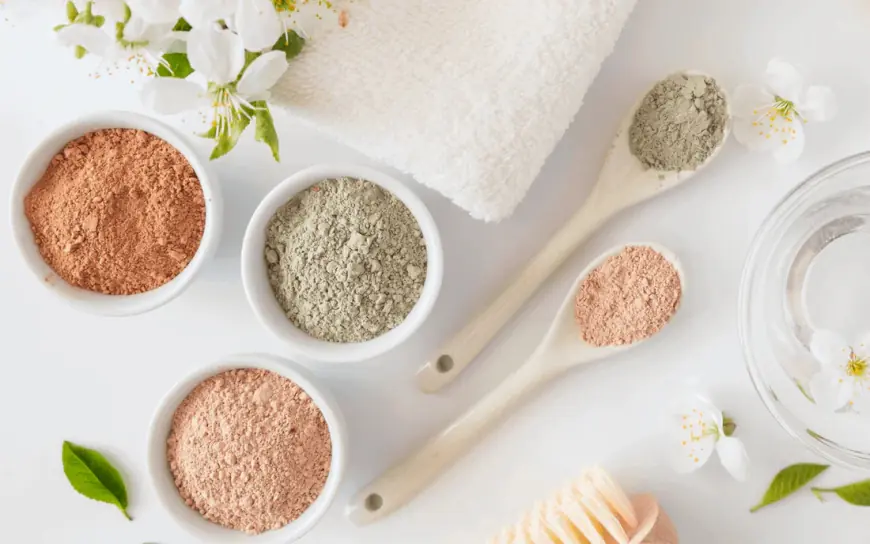A Guide to Mixing Kaolin Clay Powder for Crafts
Explore our comprehensive guide on mixing kaolin clay powder for crafts. Uncover essential tips and techniques to elevate your creative endeavors.

Kaolin clay, also known as china clay, is a versatile material widely used in various crafting projects. Whether you're a ceramic artist, a soap maker, or an enthusiast experimenting with natural materials, kaolin clay offers a range of benefits. This guide will walk you through the process of mixing kaolin clay powder effectively, ensuring you achieve the best results for your craft projects.
Understanding Kaolin Clay
Kaolin clay is a fine, soft, white mineral known for its absorbent properties, making it a popular choice in ceramics, skincare, and even paper production. It is composed primarily of kaolinite, a silicate mineral that provides smooth texture and flexibility when mixed correctly.
The clay is valued for its ability to enhance texture, improve durability, and provide a natural, matte finish. Artists and craft enthusiasts often source their materials from reputable kaolin clay powder suppliers to ensure high-quality results.
Tools and Materials Needed
Before you start mixing kaolin clay powder, gather the following materials:
-
Kaolin clay powder
-
Water (distilled or filtered for best results)
-
Mixing bowl (non-metallic)
-
Spatula or wooden stirrer
-
Measuring cup or scale
-
Protective gloves and mask (optional but recommended)
Having the right tools will ensure a smooth mixing process and prevent contamination of the clay mixture.
Step-by-Step Guide to Mixing Kaolin Clay Powder
Step 1: Measure the Kaolin Clay Powder
Accurate measurement is crucial when working with kaolin clay. Depending on your project, measure out the required amount using a scale or measuring cup. If you're mixing a small batch, start with one part clay to two parts water to test the consistency.
Step 2: Add Water Gradually
Never add too much water at once. Start by pouring a small amount of water into the mixing bowl with the clay powder. Use a spatula or wooden stirrer to blend it gradually. The goal is to achieve a smooth, lump-free paste.
Step 3: Mix Thoroughly
Continue stirring the mixture until it reaches a uniform consistency. If the mixture is too thick, add more water in small increments. If it’s too runny, add a little more kaolin clay powder.
Step 4: Allow the Mixture to Set
Once mixed, let the clay sit for a few minutes. This helps in proper hydration and ensures a smoother consistency when applying it to your craft project.
Step 5: Test the Consistency
Before using the mixture, test a small amount on a surface to see if it meets your needs. If needed, adjust by adding more water or clay powder.
Tips for Best Results
-
Use filtered water: Tap water may contain minerals that interfere with the clay’s properties.
-
Mix in small batches: This prevents wastage and ensures you always work with fresh clay.
-
Store properly: If you have leftover clay mixture, store it in an airtight container to prevent drying.
-
Choose quality clay: Sourcing from reliable industrial minerals suppliers ensures purity and performance.
Common Uses of Mixed Kaolin Clay
Once you’ve mastered the mixing process, you can explore various applications for kaolin clay, such as:
-
Ceramics: Used in pottery and porcelain for smooth texture and durability.
-
Soap Making: Adds a natural, silky feel to handmade soaps.
-
Face Masks: Commonly used in skincare for its gentle cleansing properties.
-
Painting and Pigments: Enhances color and texture in natural paints.
Conclusion
Mixing kaolin clay powder is a straightforward process that requires patience and precision. Whether you're crafting ceramics, skincare products, or art pieces, understanding how to mix it properly will enhance the quality of your work. By sourcing from reputable kaolin clay powder suppliers and following best practices, you can ensure consistent and high-quality results for all your creative projects.
With the right techniques and materials, kaolin clay can become an essential part of your crafting repertoire. Experiment, refine your methods, and enjoy the versatility that this incredible natural material has to offer!












